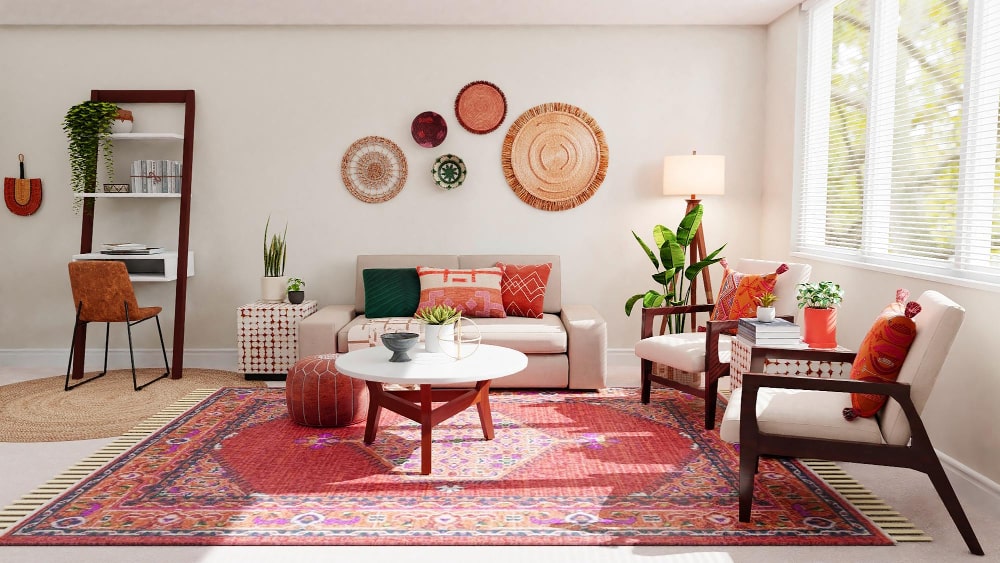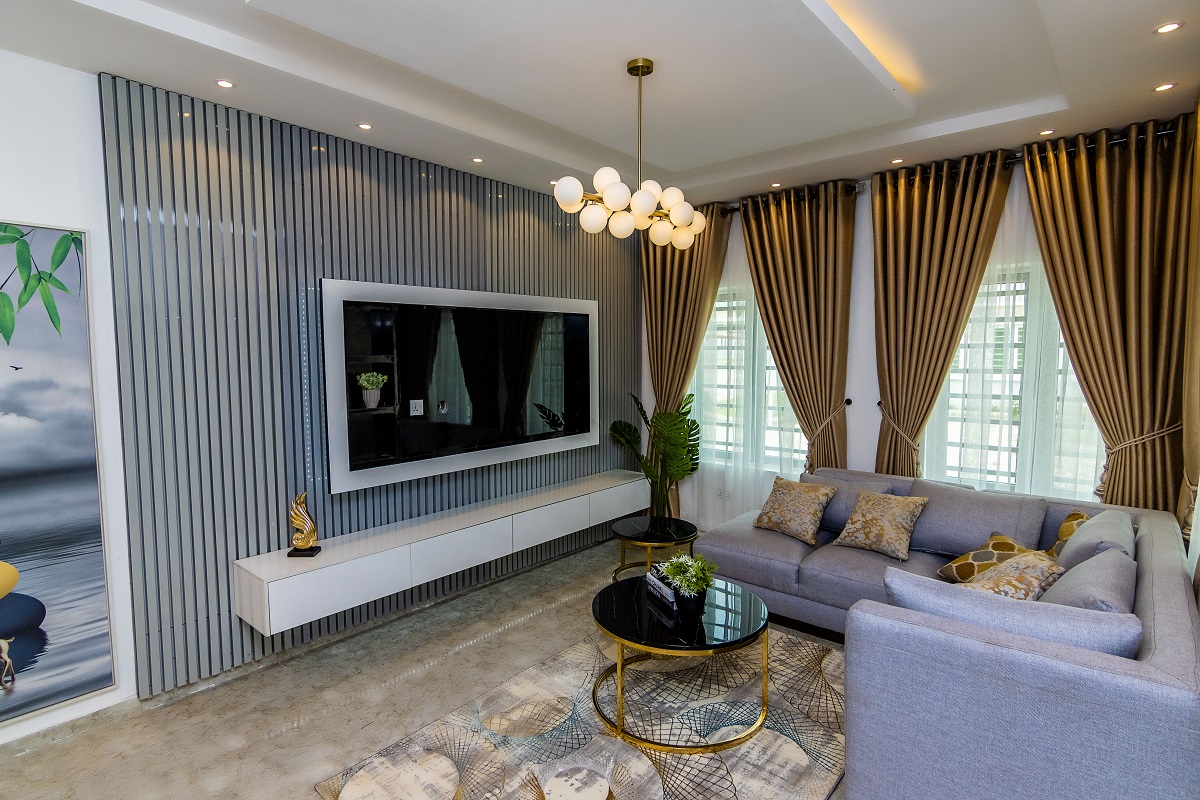
Whether you're moving into a new home, renovating an existing one, or simply refreshing your space, interior design and decoration are the key to creating a space that is not only functional but also reflects your personal style. A well-designed home can have a profound impact on your mood, productivity, and overall well-being. But with so many design styles, colors, and trends to choose from, where do you begin?
In this article, we’ll explore essential tips and techniques to help you create a beautifully designed and decorated home. From understanding design principles to choosing the right furniture and color scheme, we’ll guide you step-by-step on how to turn your home into a comfortable and stylish sanctuary.
1. What is Interior Design and Decoration?
Interior design is the art and science of enhancing the interior of a building to create a more aesthetically pleasing and functional environment. It involves understanding the needs of the people who will be using the space and balancing design elements such as furniture, layout, color, lighting, and materials.
Interior decoration, however, is more focused on the visual and aesthetic elements of a room, including selecting and arranging furniture, artwork, textiles, and accessories to enhance the overall style and ambiance of the space.
While both design and decoration work together, interior design is typically more comprehensive, considering both form and function, while interior decoration focuses mainly on appearance.
2. Understanding the Principles of Interior Design
To create a cohesive and well-designed space, it's important to understand the fundamental principles of 村屋裝修 :
-
Balance: Achieving visual balance is crucial to creating a harmonious space. You can achieve balance in several ways:
- Symmetry: Mirror image designs for a formal look.
- Asymmetry: A more dynamic and informal balance.
- Radial: Arranging elements in a circular pattern around a central point, like a chandelier or focal point.
-
Proportion and Scale: The size and scale of furniture and decor pieces must be appropriate for the size of the room. Too much furniture can make a small room feel cramped, while too little furniture in a large room can make it feel empty.
-
Rhythm: Rhythm is about creating a flow between different elements in a room. This can be achieved through repetition of colors, textures, or shapes.
-
Contrast: Contrast adds drama and visual interest. Play with contrasting colors, shapes, and textures to make key elements stand out and draw attention.
-
Unity: All the design elements should work together to create a unified look. Whether you opt for a minimalist, eclectic, or traditional style, unity ensures a cohesive feel throughout the space.
3. How to Choose Your Interior Design Style
Choosing a design style is one of the most exciting aspects of interior design. Here are some popular design styles to consider:
-
Modern: Characterized by clean lines, neutral colors, and minimalist furniture. Modern designs focus on functionality and simplicity with open, airy layouts.
-
Contemporary: While often confused with modern design, contemporary is always evolving to reflect current trends. It mixes elements from various styles, blending minimalism with bold features.
-
Rustic/Farmhouse: Emphasizes natural materials like wood, stone, and metal. The rustic style evokes a cozy, country feel with an emphasis on comfort and charm.
-
Industrial: Inspired by loft apartments and factories, industrial design features exposed brick, raw metal, and unfinished wood. It’s perfect for urban environments and adds an edgy, trendy touch.
-
Scandinavian: Focuses on simplicity, functionality, and minimalism. Scandinavian design often uses light colors, natural textures, and clean, streamlined furniture.
-
Bohemian: A laid-back and eclectic style, boho design incorporates vibrant colors, patterns, and a mix of materials. It’s perfect for those who love a more relaxed and personal design.
4. Room-by-Room Decorating Ideas
Different rooms require different design strategies. Here’s how to approach decorating various spaces in your home:
-
Living Room: Start by choosing a focal point, like a fireplace, TV, or large piece of art. Arrange seating to encourage conversation, and add texture with rugs, pillows, and throws. Consider an area rug to anchor the furniture and define the space.
-
Kitchen: Focus on functionality. Opt for high-quality, durable materials for countertops and cabinetry. If space allows, incorporate an island for additional workspace and storage. A bold backsplash can add character and make the kitchen feel unique.
-
Bedroom: Your bedroom should be a retreat. Choose calming colors and create a focal point with your bed. Layer textiles like blankets, throws, and pillows to make the space cozy. Add personal touches with artwork or decorative objects.
-
Bathroom: To make the most of a small space, choose sleek, space-saving furniture and fixtures. Go for neutral colors to make the room feel more expansive, and use mirrors to create the illusion of more space. Add warmth with plants or natural wood accents.
-
Home Office: An organized, functional home office helps you stay productive. Choose an ergonomic chair and a spacious desk. Include plenty of storage for documents and office supplies, and personalize the space with artwork or a few inspiring items.
5. The Power of Color: How to Choose the Right Palette
The colors you choose for your home can affect your mood and the overall atmosphere of the space. Here’s how to choose the right palette:
-
Warm Colors: Reds, oranges, and yellows can make a room feel cozy and inviting. Use these colors in spaces where you entertain or socialize, like the living or dining room.
-
Cool Colors: Blues, greens, and purples are calming and perfect for spaces meant for relaxation, like bedrooms and bathrooms.
-
Neutral Colors: Whites, grays, and beiges provide a timeless, versatile backdrop. These colors work well in any room and allow for the introduction of bolder accents.
-
Accent Colors: Add personality to a neutral room with vibrant accent colors like teal, mustard yellow, or coral. Incorporate accent colors through pillows, rugs, and artwork.
6. Selecting Furniture that Works for Your Space
The right furniture is crucial in creating a functional and aesthetically pleasing space. Here are a few tips:
-
Size and Scale: Make sure your furniture fits the room’s dimensions. Avoid overcrowding small spaces with oversized furniture, and use multi-functional pieces for small rooms.
-
Comfort: Furniture should be as comfortable as it is stylish. Test out sofas, chairs, and mattresses before purchasing to ensure comfort.
-
Material and Durability: Choose materials that suit your lifestyle. For example, leather is durable and easy to clean, while wood adds warmth and texture. Consider the maintenance needs of different materials.
-
Arrangement: The way you arrange furniture can influence the flow and feel of the space. Avoid pushing all furniture against the walls; instead, group pieces to create conversation areas and maximize space.
7. Lighting: How to Set the Right Mood
Lighting is essential for creating the right ambiance in any room. Use three types of lighting to ensure the space is well-lit and inviting:
-
Ambient Lighting: General lighting that provides overall illumination for the room. Ceiling fixtures, chandeliers, and recessed lighting are common choices.
-
Task Lighting: Focused lighting used for specific tasks like reading, cooking, or working. Desk lamps, pendant lights, and under-cabinet lighting are examples.
-
Accent Lighting: Used to highlight certain features or objects in a room. Use wall sconces, track lights, or picture lights to add visual interest.
8. How to Incorporate Trends Without Overdoing It
Design trends come and go, but there are ways to incorporate them into your home without overwhelming the space. Here's how:
-
Focus on Accessories: Instead of overhauling an entire room, add trendy accessories like throw pillows, rugs, or lamps to bring in fresh design elements.
-
Mix Trends with Timeless Pieces: Combine trendy items with classic, timeless furniture to create a balanced, long-lasting look.
-
Be Subtle: If you're incorporating a bold trend, like a vibrant color, consider using it sparingly on an accent wall, cushions, or a piece of artwork.
9. Interior Design on a Budget: Tips for Affordable Style
You don't need to spend a fortune to create a beautifully designed space. Here are some budget-friendly tips:
-
Shop Secondhand: Thrift stores, flea markets, and online marketplaces are great places to find unique and affordable furniture and decor.
-
DIY Projects: If you're crafty, consider tackling simple DIY projects like painting furniture or making your own artwork.
-
Repurpose Existing Items: Give old furniture a new life by repainting it or adding new hardware to cabinets and drawers.
-
Mix High and Low: Combine budget-friendly pieces with a few high-quality items, such as a statement sofa or a quality rug, to elevate the space.
10. Conclusion: Creating Your Dream Home
Interior design and decoration are about much more than just aesthetics—they are about creating a home that reflects your personal style and suits your lifestyle. With careful planning, an eye for detail, and a little creativity, you can transform any space into a beautiful, functional home that you'll love for years to come.



